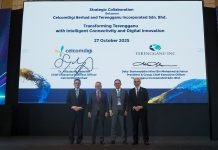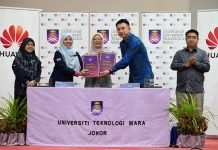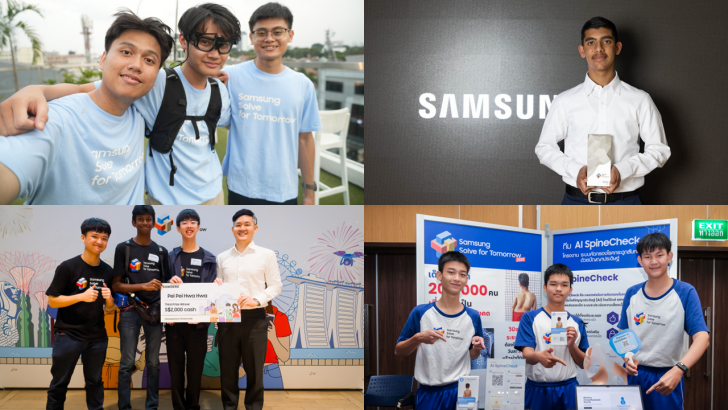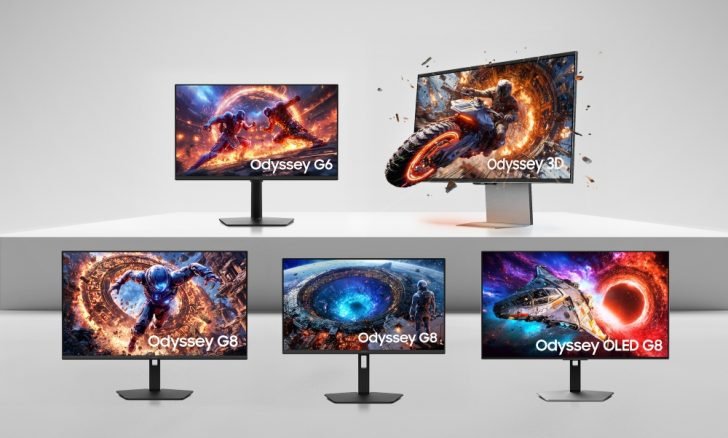More than ever, sustainability is at the forefront of conversations and actions by governments, organizations, and consumers alike. Without a doubt, addressing the ongoing climate crisis and establishing a circular economy are among some of the biggest, most pressing challenges of our time.
At Samsung Electronics, we are taking active steps to make a difference to environmental sustainability today and for future generations. With the unique size and complexity of our business, we believe that our size and scale means that our ongoing investments in environmental health have an opportunity to make significant impact.
Hence in September 2022, we announced our new global environmental strategy to tackle climate change holistically as an organization. Watch Samsung’s efforts to overcome climate crisis here: https://youtu.be/NSLR700LMNo
Focusing on outcomes and as a careful reflection of the complexity of our business, our new approach to the environment encompasses everything from commitments to achieving enterprise-wide net zero emissions by 2050, expanding use of renewable energy, and strategic investments in new sustainable technologies, to create a better, healthier planet for all.
This new strategy builds on Samsung Electronics’ existing efforts around climate change, significantly expanding the scope of both programs and investments to come. A helpful summary can be found in the infographic here.
Samsung Electronics has also joined the RE100, a global corporate renewable energy initiative, and plans to run all operations outside of Korea as well as the Device eXperience (DX) Division on renewable energy within five years. Here in Southeast Asia and Oceania (SEAO), we are on track to achieve the goal for matching electricity use with renewable energy by 2027.
Under the new strategy, we are planning to enhance resource circularity of our electronics products across the entire product lifecycle. The Galaxy Z Fold4 and Flip4 have already been designed to incorporate plastics recycled from discarded fishing nets, and we plan to expand this to more products. We will also implement low-power technologies in major models of seven consumer electronics products – smartphones, refrigerators, washing machines, air conditioners, TVs, monitors and PCs – to reduce energy consumption.

Additionally, we are planning to expand the scope of our e-waste collection system from around 50 countries today to more than 180 countries by 2030. At the same time, we plan to collect a cumulative 10 million tons of electronic waste between 2009 and 2030, one of the highest targets industry-wide.
Sustainability involves everyone
This is an all-hands-on-deck effort that cuts across the entire business, including right here for us in SEAO.
Eco-conscious practices have been put in place at our Samsung Services Centers across the region, with the integrated global customer service system implemented at most of the Samsung Service Centers in the region as we make strides towards going paper-free. Customer documents relating to product repairs, service records, and receipts are now shared electronically via message or email.
In addition, customers in Australia, Indonesia, Malaysia, Thailand, the Philippines and Vietnam are now receiving the mobile phones they have sent in for services and repairs packed in eco-friendly materials. For example in Australia, customers can expect an eco-friendly packaging made from 96% recyclable materials that can be repurposed into a mobile and table stand.
Reducing E-waste
E-waste ‘Eco Boxes’ are also available in over 180 Samsung Service Centers in SEAO currently, such as major cities like Auckland, Bangkok, Kuala Lumpur, Manila and Sydney, allowing customers to conveniently dispose of their old mobile phones and recycle them in a proper way.
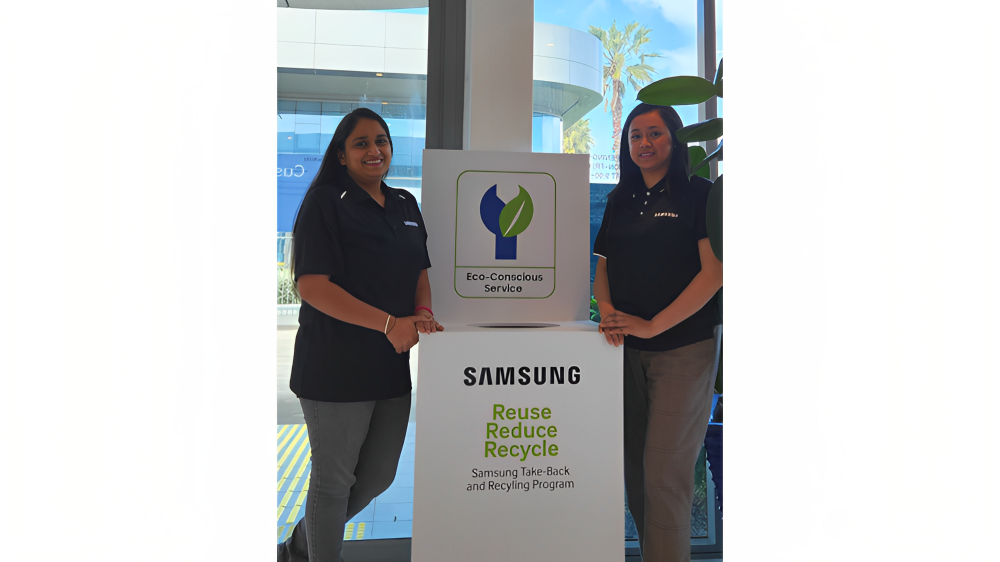
To reduce e-waste, customers can also choose to replace only the defective parts of their product instead of replacing assembly modules through Eco Repair.
In New Zealand, we partnered with technology recycling firm Computer Recycling to reuse the gold, silver, and other metal components in discarded devices and appliances such as smartphones, TVs and refrigerators. These include old electronics collected from Papua New Guinea and the South Pacific islands such as Fiji, Samoa, and Tahiti, which are then sent for recycling in Auckland. The initiative has been well received and Samsung New Zealand is currently looking to bolster recycling capacities over the next two years.
In Singapore, we launched the ‘Go Green, Go Galaxy’ campaign in September, offering additional discounts off the purchase of Samsung Galaxy Watch5 series devices and the Galaxy Buds2 Pro for consumers who chose to recycle their old smartwatch and old wireless earbuds at our in-store e-waste bins. Our e-waste operator partner, Alba, collected these old devices for proper treatment and recycling, channeling back the raw materials recovered from these products into production where appropriate.
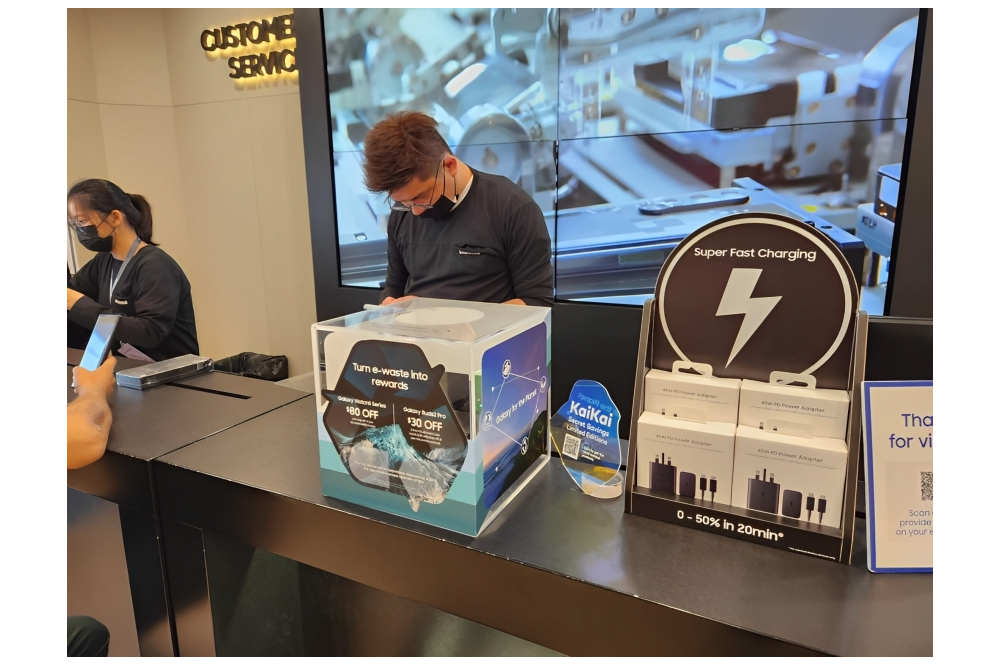
Continued public education on the importance of sustainability is critical for the future – especially among the youths in our region. We do this through our regular youth outreach efforts, including Solve for Tomorrow, our annual student competition focused on Science, Technology, Engineering and Mathematic (STEM) skills.
Many innovative creations surrounding sustainability have emerged from Solve for Tomorrow. For instance, the Team Eco Warriors student team from Hanoi, Vietnam (pictured below) won the High School Category for Solve for Tomorrow last year. Their original mask-recycling machine seeks to mitigate waste created from the widespread use of face masks during the pandemic by melting and remoulding plastic masks into plastic pots.

Taking action to create a better planet for all
At Samsung, we take our environmental responsibilities extremely seriously. While we recognize that one company’s strategy will not be a solve-all solution, Samsung is making this bold bet to ensure it plays an active role in the protection of the planet for our younger and future generations.
In the upcoming year, we can look forward to seeing real, tangible changes to our operations as we roll-out our bold environmental actions and targets across markets in the region. Working with our employees, customers, and industry and government partners, we are optimistic about the changes we are making to enable a better world and to make sustainability a part of our consumers’ everyday lives here in Southeast Asia and Oceania and beyond.






![[Video] Unfolding What’s Next: Unboxing Galaxy Z TriFold](https://stuffmotion.com/wp-content/uploads/2025/12/Samsung-Mobile-Galaxy-Z-TriFold-Unboxing-Video_thumb932-218x150.jpg)












![[CES 2026] Quest For Perfect Color…Samsung To Push Boundaries of TV at The First Look](https://stuffmotion.com/wp-content/uploads/2025/12/Samsung-TVs-and-Displays-CES-2026-The-First-Look-Push-Boundaries-of-TV_Thumb728-218x150.jpg)








